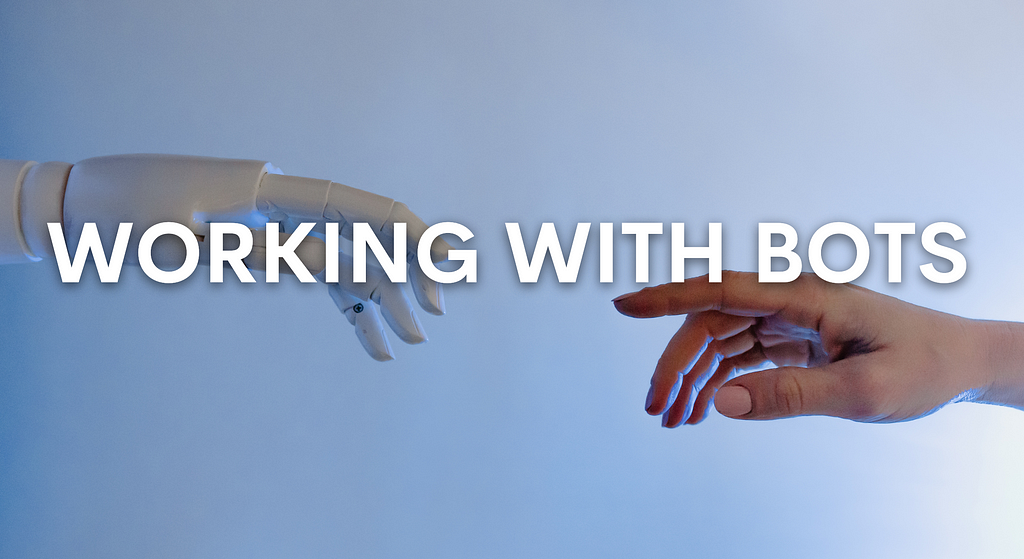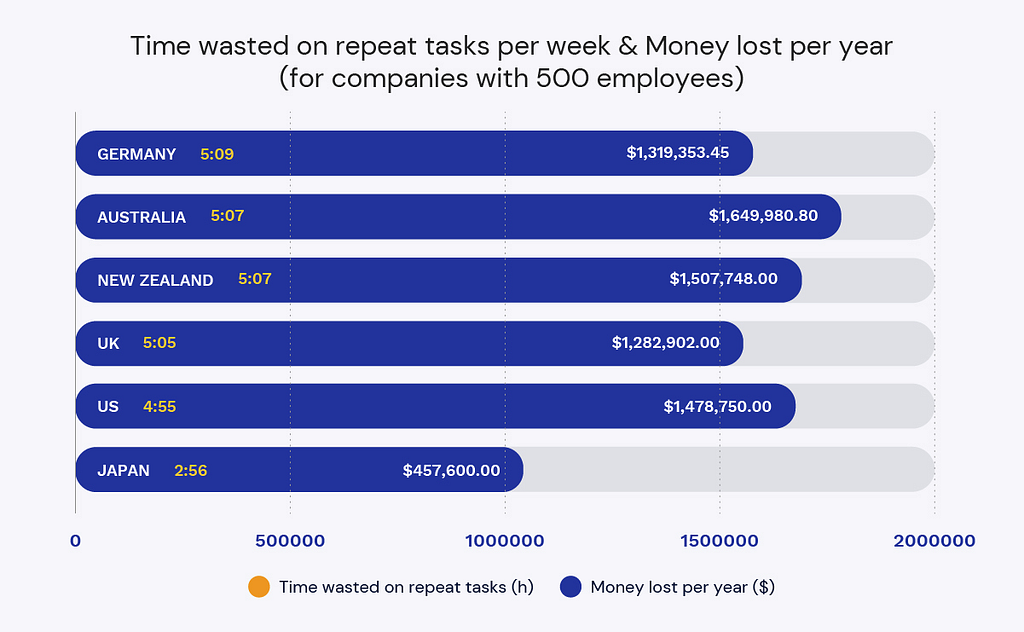Your cart is currently empty!
Working & Collaborating with RPA Bots: Top 5 Ways to Succeed
It is easy to get spooked by the fiction of robots taking over the human world when in reality robots being a part of the human workforce is great.
Robotic process automation eliminates the barrier of employees’ need of performing mundane tasks and enables them to focus on other productive business activities.

In this article, we are going to discuss the top 5 ways that keep you on the right track for RPA bots collaboration.
But first, what are RPA bots?
RPA bots are software robots that perform tasks in a digital environment. These bots aim to automate repetitive tasks and therefore, they are also known as the “digital workforce”.
RPA in Organizations
In traditional automation tools, software developers have to create a list of actions to automate the tasks and interface to back-end systems using application programming interfaces (APIs).
In contrast, robotic process automation develops the action list by performing the task in the graphical user interface (GUI), and then automatically repeating these tasks directly in GUI.
But integrating daily standard operating procedures (SOP) and establishing an SOP for maintaining, updating, and re-evaluating automation is challenging. Once this is achieved both companies and employees will reap the benefits of automation.

Introducing employees to the present and future of work and automation can help businesses grow leaps and bounds. For instance, imagine the benefits if an employee can shift their focus from analyzing the spreadsheets to developing several pivot suggestions based on AI’s analysis!
Related Read: What is RPA? A Detailed Guide for Business Owners
5 Ways to Foster Collaboration between Humans and Robots
1. Understanding RPA benefits
There are various reasons organizations are implementing RPA as a solution to increase productivity and efficiency for their business. Working with robots and sharing their benefits would help your employees access the importance of automation in the workforce.
Of the most cited benefits of RPA, customer satisfaction & speed to market are the best ones after productivity and product quality.

Here are a few reasons employees can look forward to benefiting from their digital co-workers:
- Boosted productivity: By taking advantage of the automation provided by RPA bots, the human workforce can get back their time to focus on more valuable tasks.
- Better accuracy: RPA bots act as helping hands in tasks that have an added risk of human errors, such as in data entries.
- More reliability: Bots react and respond to events in real-time performing processes while employees focus on other things, to keep their workflows running 24/7.
2. Accessing business needs for RPA
Overview your existing tasks, workflows, and processes, and understand what can be changed to optimize these processes? When starting with RPA, identify your systems that need to change so that your human employees can spend time on tasks suited to them.

The time wasted on repetitive tasks, and the money lost per year as shown in the statistics above are the two solid reasons why your business needs RPA, along with human resources.
No matter how great the bots are, humans are still better at critical thinking, strategizing, and problem-solving. So, RPA bots are not here to replace employees, but to assist them with efficiently getting their jobs done.
To get the best experience with collaborative robots, focus on your human employees, and when you have learned the benefits you can jump right in and automate everything.
3. Find your Automation Approach
Not all bots are created equal, different bots serve different purposes. There are mainly two types of RPA bots, attended and non-attended, and the third one, Intelligent process automation still in its infancy.
Attended bots help you complete your everyday tasks easier but with human intervention. These tasks go into action when a user commands them. On the other hand, unattended automation work behind the scenes. These bots get triggered when an action such as a file being added into the folder is performed.
Both of these automation types are important for human collaboration with robots, and companies can use one type of mix, whichever suits the employee’s needs better.
4. Automate Processes with RPA Bots
As you start implementing RPA and automation in your organization grows, you’ll be able to provide an RPA bot for all your employees. A great RPA solution is that which can provide bots for the right optimization.
Here are a few real-life examples of RPA implementation and collaboration in the workplace:
→ RPA in Banking (Carter Bank & trust)
Problem: Too much wasted time on routine, manual tasks from employee on-boarding to customer account management.
RPA Solution: After bringing RPA culture to the organization, these processes were streamlined and over 300,000 customer accounts were migrated to the new system within 24 hours.
Benefit: Achieved 3,800% ROI within 5 months
→ RPA in Telecommunications
Problem: Manual logging into websites to capture and consolidate customer billing information, more than 40 employees were assigned to this tedious error-prone task.
RPA Solution: Software bots are taking over these repetitive and manual tasks. MetTel also combined automation with remediation to improve the response times.
Benefit: Replaced 75% of their manual efforts with software robots.
→ RPA in Healthcare
Problem: The traditional claim management system accepted only one claim file each day from 837 daily generated files.
RPA Solution: Baptist Health automated the daily transfers of these files to the FTP server which resulted in greater centralized control over thousands of file transfers that occur each day.
Benefits: Saved 40 hours a month in manual tasks.
Related Read: RPA Use Cases In The Real World [Updated 2022]
5. Maximize the Collaboration
The final step for reaping benefits from collaboration between the human workforce and bots is to maximize the collaboration and make the most out of the RPA bots. RPA bots can give your employees more time while improving their work-life balance. Collaborative robots can fill in and work 24/7 with a little time off allowing your employees to enjoy their freedom.
RPA bots can also help you automate your tasks such as website monitoring, that require 24/7 attention, so instead of having a human employee monitor the status of the webpages, you can implement website automation for the same.
Transform your Business with RPA
We all are already familiar with the idea of automation, it has made our lives easier, and better.
Streamlining your business tedious tasks helps you save time, reduce costs and increase efficiency in your business processes. Introducing RPA bots in your business doesn’t mean that you are taking their jobs away, but simplifying them by automating repetitive and mundane tasks.
Working & Collaborating with RPA Bots: Top 5 Ways to Succeed was originally published in Chatbots Life on Medium, where people are continuing the conversation by highlighting and responding to this story.